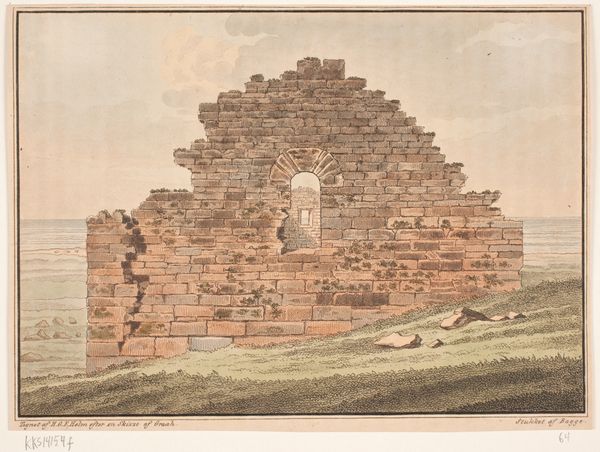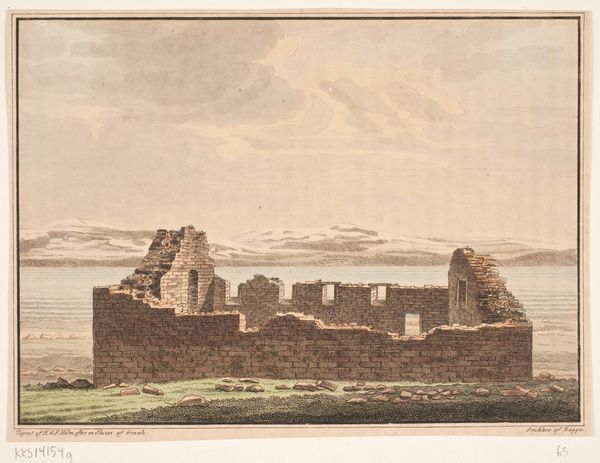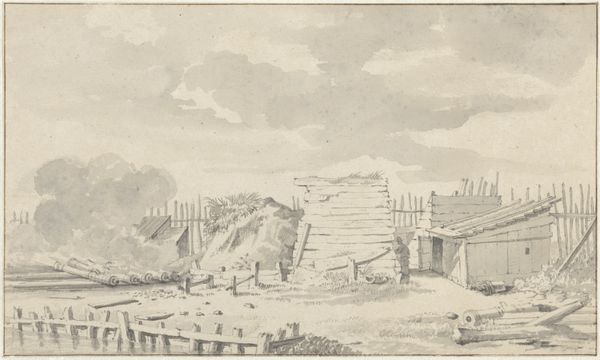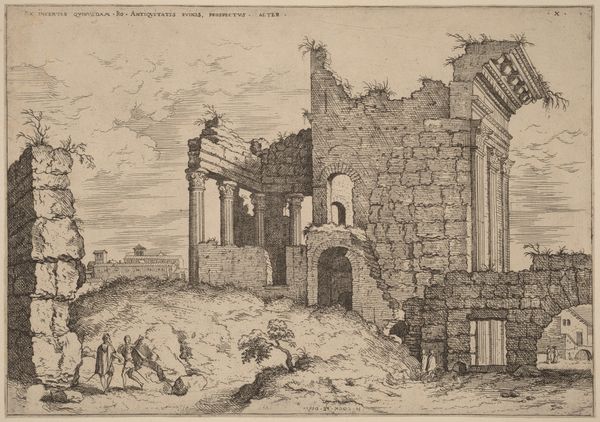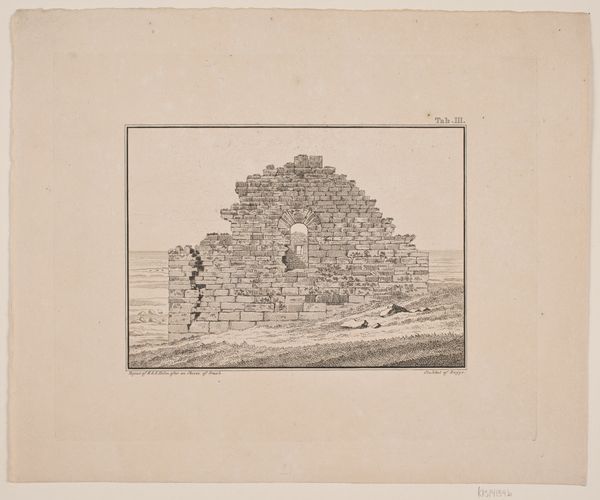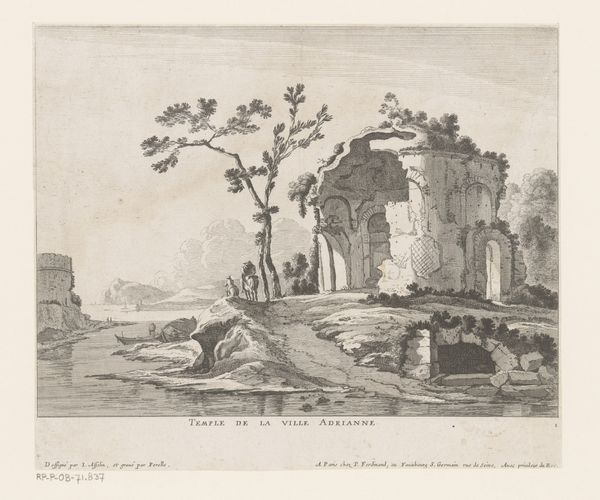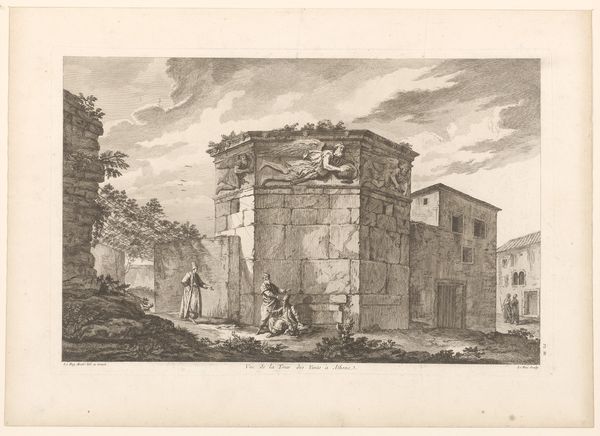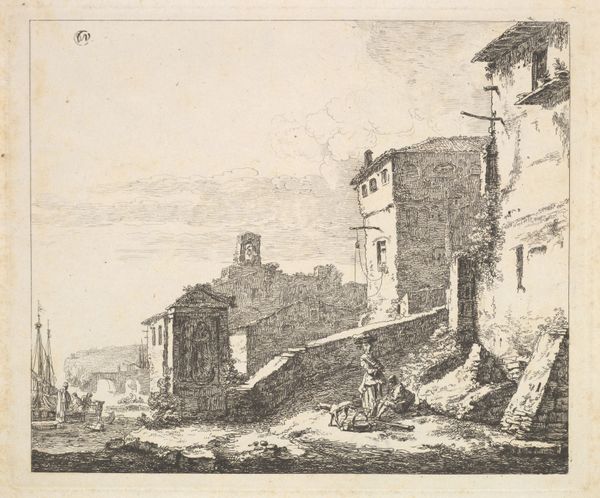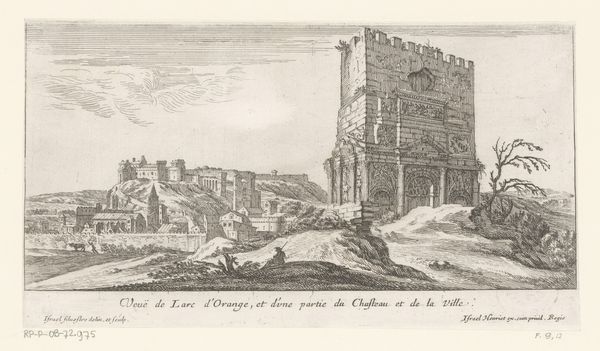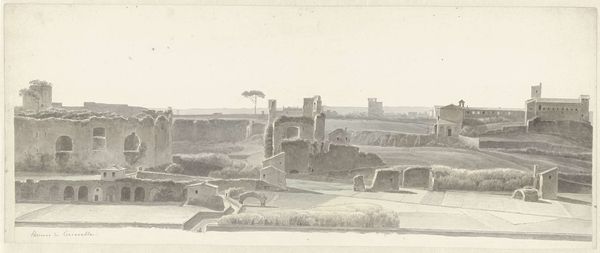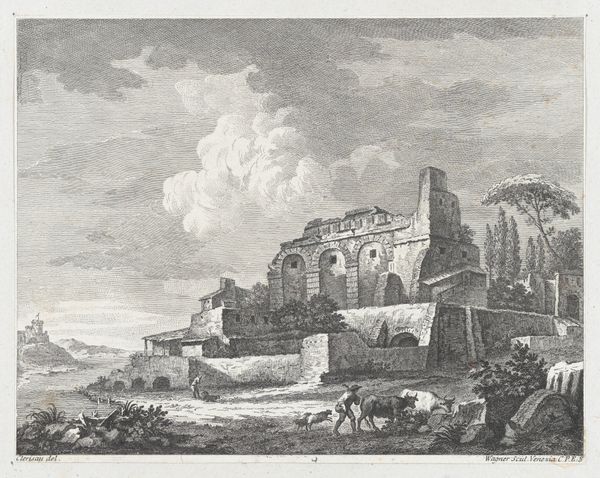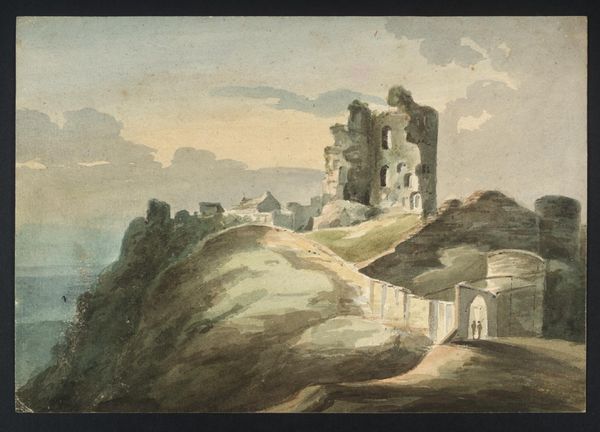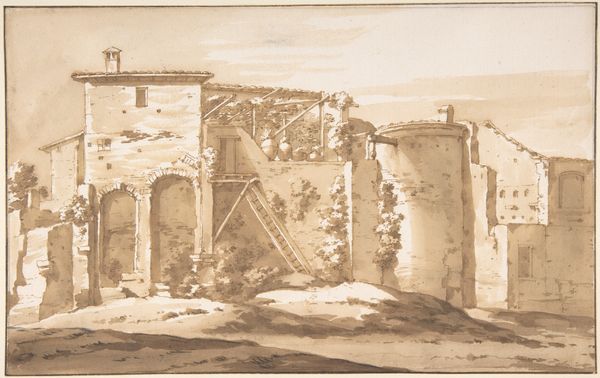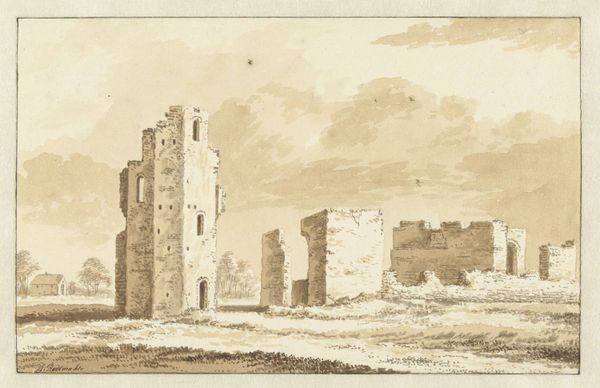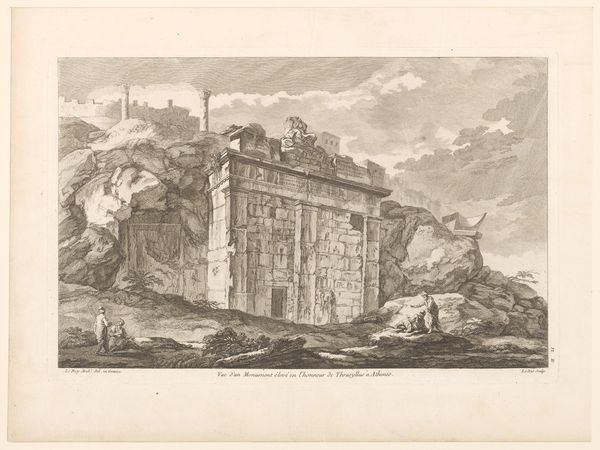
Kirkeruin på Grønland. Illustration til W.A. Graah. Undersøgelsesrejse til østkysten af Grønland 1832
0:00
0:00
print, engraving
#
aged paper
#
toned paper
# print
#
landscape
#
romanticism
#
history-painting
#
engraving
Dimensions: 127 mm (height) x 169 mm (width) (bladmaal)
Editor: This is Oluf Bagge’s 1832 engraving, “Kirkeruin på Grønland,” or "Church Ruins in Greenland," an illustration for W.A. Graah’s exploration voyage. I find its depiction of this decaying structure so evocative and sad, almost romantic. What can you tell me about it? Curator: This image really encapsulates the way 19th-century European artists engaged with places outside their immediate experience. Bagge, of course, never visited Greenland. It's an illustration created in response to a travelogue. What do you think that distance, that mediation, does to the image itself? Editor: It adds a layer of interpretation. It feels like Bagge is drawing from Graah’s experience, but also adding his own… almost romanticized vision. Curator: Exactly. Consider the historical context: Danish colonial expeditions and the desire to map and understand these remote territories. But simultaneously, we see the burgeoning Romantic movement and its fascination with ruins, with the sublime power of nature, and the melancholic contemplation of lost civilizations. Is Bagge commenting on Danish colonialism here, do you think, or just following a popular aesthetic trend? Editor: Perhaps both? He is illustrating an explorer’s journey, so there’s an inherent promotion of that colonial venture. But the ruin itself becomes this symbol of, perhaps, the futility of even the best laid plans of man, in the face of time and nature. Curator: Precisely. The ruin embodies fragility, the ephemeral nature of power. And remember, engravings were also a method of dissemination, bringing this vision, mediated and interpreted, to a wider audience. So what kind of message do you think an image like this, showing the limitations of mankind, might have sent in its time? Editor: It really makes me consider the role of art in shaping perceptions of colonial landscapes. It’s not just about documenting, but also about constructing narratives of power, decay, and ultimately, about cultural identity and national narratives. Thanks, that really opened my eyes.
Comments
No comments
Be the first to comment and join the conversation on the ultimate creative platform.
